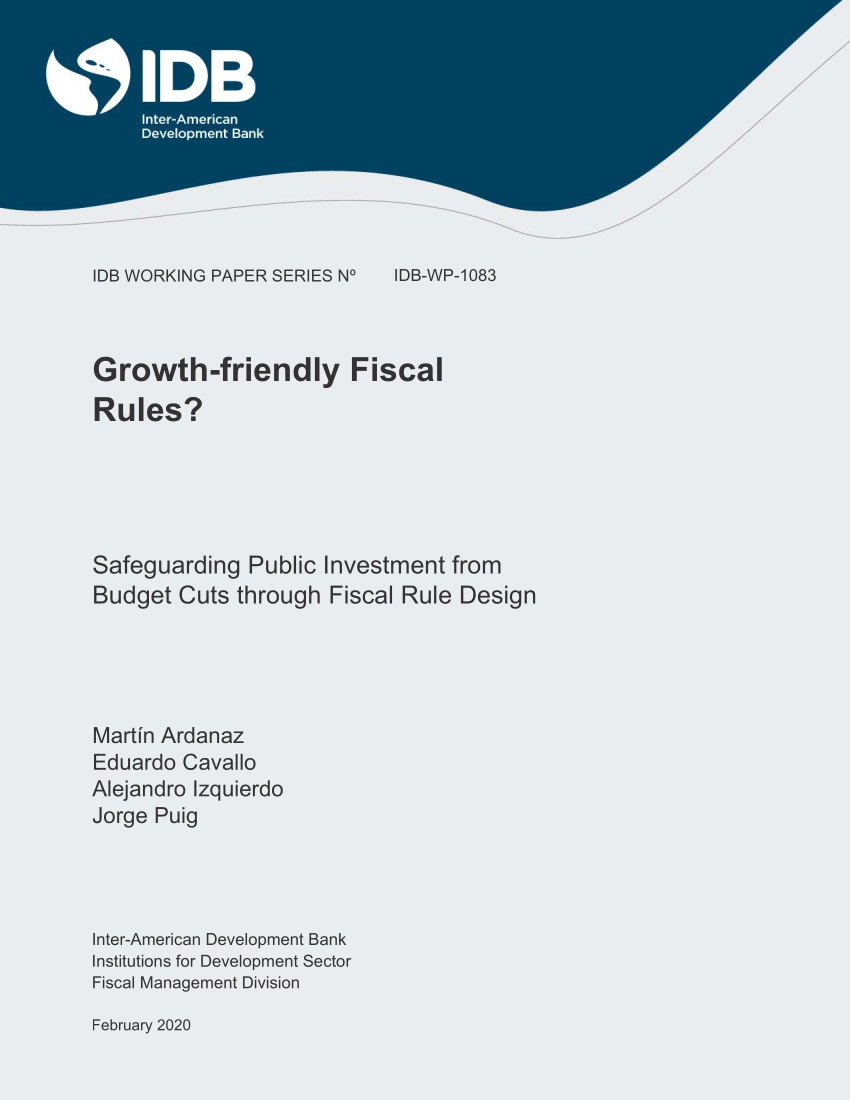Growth-friendly Fiscal Rules?: Safeguarding Public Investment from Budget Cuts through Fiscal Rule Design
Date
Feb 2020
Journal version
Summary
Fiscal adjustment episodes tend to be accompanied by large public investment cuts across countries, contributing to the well documented procyclical bias in public capital expenditures. We study patterns of public investment behavior during fiscal consolidations in a sample of 75 advanced and emerging economies during 1990-2018 and find that results differ significantly depending on fiscal rule design. Fiscal rules can be “flexible”, meaning that they include mechanisms to accommodate exogenous shocks (e.g. cyclically adjusted fiscal targets, well defined escape clauses, and differential treatment of investment expenditures) or “rigid” i.e., establishing numerical limits on fiscal targets without taking into account flexible features. We nd that in countries with either no fiscal rule, or with a rigid fiscal rule, a fiscal consolidation of at least 2% of GDP is associated with a 10% reduction in public investment, on average. Instead, in countries with flexible fiscal rules, the negative effect of fiscal adjustments on public investment vanishes. Results hold after controlling for possible endogeneity bias in the estimations. We show that by reducing procyclical biases in public investment spending, flexible fiscal rules can add a growth enhancing dimension to fiscal sustainability concerns that have typically been the focus of fiscal rules in the past.




